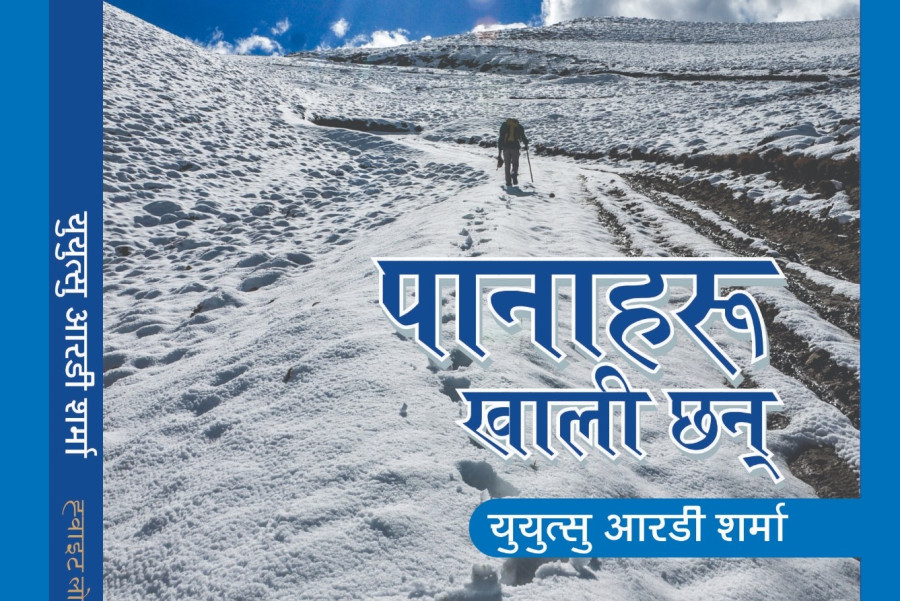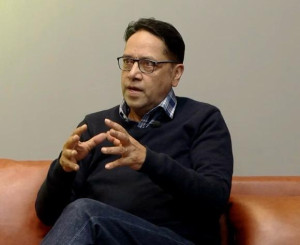Books
Poems that travel across and beyond the Himalayas
Yuyutsu RD Sharma’s Panaharu Khali Chhan is a collection that outlines the poet’s oeuvre and leaves the readers wanting more.
Bibek Adhikari
In his long career of 40 years, Sharma has produced more than a dozen anthologies, contributed to numerous literary magazines worldwide, and served as a visiting poet-scholar at many American universities. What makes his poems so widely read and anthologised is because they are grounded: they depict the actual image of the penurious lower-class Nepali society. Yet the depiction is not straightforward—he yokes many images into a single poem, creating a long-lasting and at times hauntingly gripping experience for his readers.
Reading the collection, which is divided into four parts—Pahadko Artha, Khacharharu, Phurbako Yarling, and Whitmanki Chhori—is synonymous with having a long tête-à-tête with the mountains and their people. It is only in the latter part of the work that readers get transported to the West: New York, Amsterdam, London, among others. The first part—Pahadko Artha, The Meaning of the Hills—chronicles the bleak and bizarre lives that thousands of poverty-stricken Nepalis are forced to live. Readers find themselves between short, pithy lines surrounded by labyrinthine images. Yet, at the heart of all these poems, the notion of loss prevails over beauty.
Take, for instance, the first poem Euta Sapana. Dreams about thunder and vultures get juxtaposed with the falling of a “four-month embryo / from the greedy mouth of a hateful hawk.” The result is the trembling of the newly-wed bride, who was “dreaming of pregnant sunsets.” It is Sharma’s caliber as a poet that enables him to stitch one image after another into the Frankenstein-esque poetry of grotesque horror. The “horror,” however, is everyday reality for many Nepalis.
In his next poem, Niyati, the poet compares the life of a street dog with a drunken porter—both are “huddled / in the shadow of / a pagoda.” The element of dread is manifested by Sharma’s choice of images: “gorilla kick” and a “pus-dripping paw.” This nauseating description of a normative scene results in a prickling sensation of fear and loathing in the reader.
In the poems that follow, Sharma contrasts Buddha with the “death of a dream” and the “illusion of a colorful lust.” He broods over the death of an old woman in a traffic accident and thinks about the fiery, swollen eyes of the sun. Bhimphedi, on the other hand, is a powerful work that brings together labour workers in a tunnel to the philosophical musing—“another name for drunkenness is death.”
Sharma also pays a fitting tribute to one of his inspirations, Gopal Prasad Rimal, in the poems Aamaka Sapanaharu and Gopal Prasad Rimal. He calls Rimal a “young embryo-son” and later the “pagoda of poetry.” What I personally found charming is his bewildering use of imagery. He defamiliarises what is commonplace and comes up with something strangely fascinating. Take his poem Lumbini as an example. He sees the sacred pond “green [but] with droplets of dried blood,” while “upon the boiling afternoon’s boundary” a tortoise raises its long neck and gawks.
In the second part of his book—Khacharharu, Mules—Sharma’s poems reach Lake Phewa, Ghorepani, and Birethanti. The people of these areas are like the hill mother from his poem, Asafaltaharu, who has nothing to offer her caterwauling son except a “moist but stinking kiss.” Yet life goes on. The hill people struggle to make their ends meet, but drag their lives like mules, carrying “stanzas of modern slavery” on their backs. These mules carry Iceberg beer, Chinese bricks, tin cans, rice sacks, and iodised salt on their backs—and they are “cursed for a lifetime eternal wandering.” So are the people living there.
The third part of the book—Phurbako Yarling, Phurba’s Earrings—takes the readers to the northern Himalayas, from where even the “God says hello.” Sharma writes about the “turquoise lake” that reflects the image of the Sagarmatha and “longs to belong to the ocean”; a stark contrast to what is assumed to be normal. Meanwhile, Phurbako Yarling is a romantic poem that embraces mountain metaphors and Helambu’s essence. The poet sees Phurba [Again] in Ghyalung right before entering the Langtang forest and reminisces his traveling experience amidst the “mountain stillness.”
The last part of the book—Whitmanki Chhori, Whitman’s Daughter—takes the readers beyond Nepal. Readers travel to the chilling alleys of London to the butterfly-filled streets of the Netherlands. One of his most read and loved poems—Ani Tapai New York-baasi Hunuhunchha (Are you a New Yorker?)—chronicles his first-hand experience in the streets of New York. Moreover, in another poem, London Bombaari, the poet travels around London and collocates the euphoria with Bhaktapur fair and Shakespeare’s Prospero.
As an ardent admirer of his many English poems, reading Sharma in Nepali was a bit of an uncommon experience. Many of the poems in this collection, having first written in English and later translated in Nepali, have a different flair from the usual contemporary poetry. Still, some poems feel like they are being forcibly translated. One example of this is Yeshuko Cross, or Christ’s Cross, which is too ambiguous even after multiple readings. But once the readers scan the English version, the meaning resurfaces. This is quite frustrating for someone solely relying on the Nepali version.
Sharma’s Nepali is peppered with many phrases from Hindi and English. Readers who are looking for a “standard Nepali” are at a loss. Nevertheless, the use of the poet’s idiolect—the speech pattern of an individual—is a classic double-edged sword: it can either attract the readers or repel them. Personally, I found it rather charming, especially reading the stanzas sprinkled with strange dialects. Still, the occasional typos and errors in punctuation make the reading a jittery one. An efficient editor can easily solve this problem.
For Sharma, the best poems are like “the poems / on the Lake [he] didn’t write,” just like the “kisses [his lover] / refused” to accept. Also, for him, the Lake (especially Lake Phewa) is like a half-written poem, forever struggling to be wholesome and achieve something illusionary. Between these two dualities—of writing the best poems and eschewing the half-baked ones—he struggles sometimes and fears the blank page, the dreadful khaali pana. In the eponymous poem, Panaharu Khhali Chhan, he “scribbles anger,” “compiles a cosmos of failure,” dreams about the “flaring fields of fire,” and “chants the mantras”—the same that used to fill his pages before.
For readers who want to peruse Sharma’s selected poems in Nepali, which he wrote (and sometimes translated) for 40 years, this anthology will be the right choice. It will outline the poet’s oeuvre and leave the readers wanting more. On a final note, reading Sharma in English is a delightful experience; reading him in Nepali, a somewhat bewildering and disconcerting one.




 13.25°C Kathmandu
13.25°C Kathmandu











